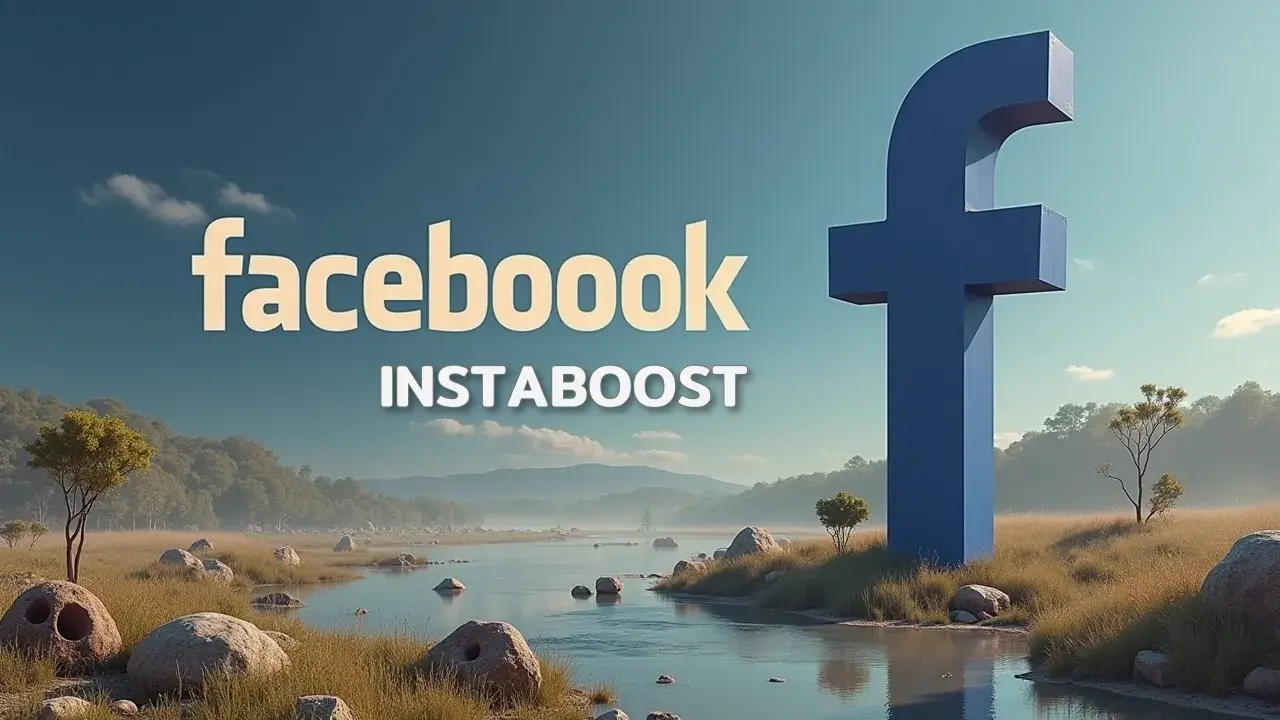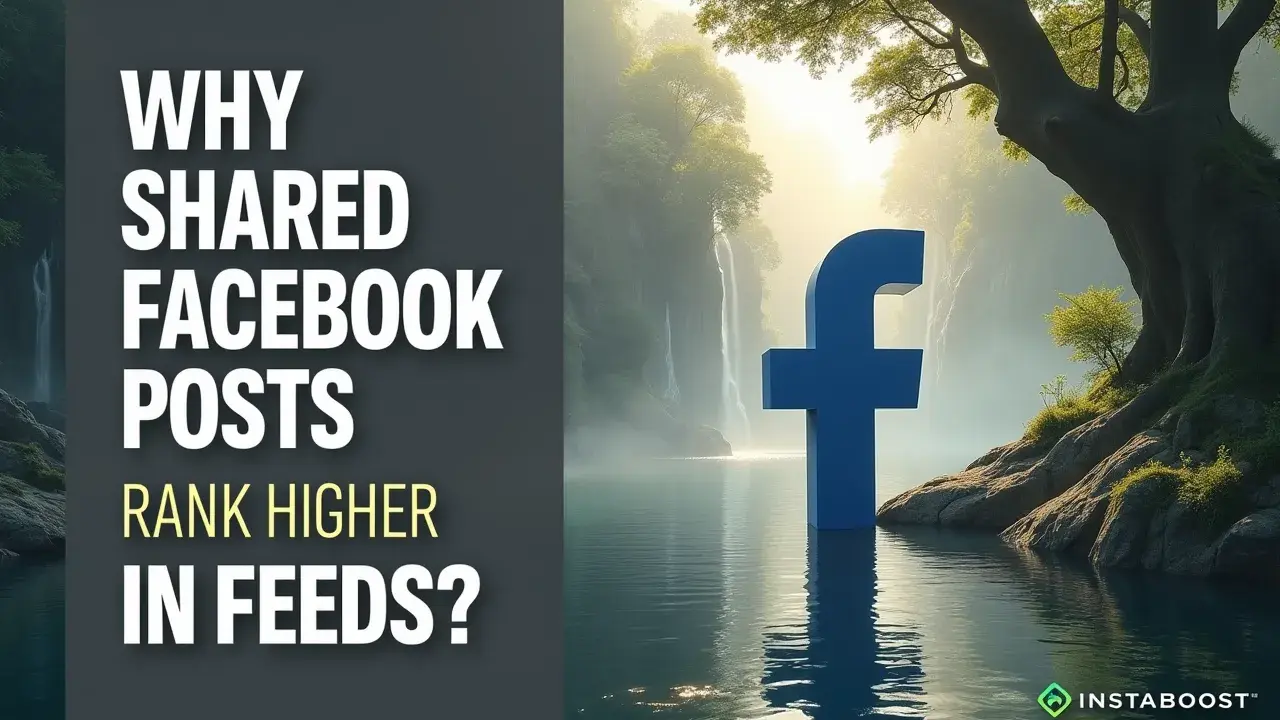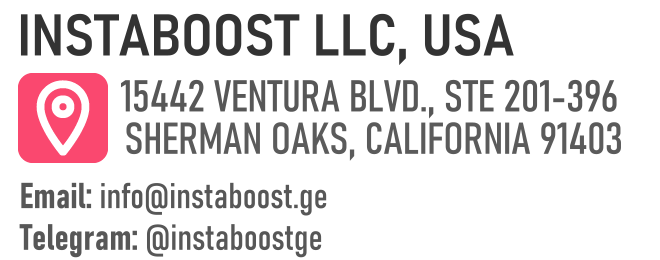Why Do Shared Facebook Posts Rank Higher in Feeds?
Shared Facebook posts often rank higher because friend validation signals relevance to the algorithm. Early engagement, especially saves and comments within the first hour, indicates traction and can boost distribution further. Monitoring these signals helps confirm whether a post is resonating, reducing guesswork while minimizing the risk of overvaluing vanity metrics. When momentum appears, repurposing the post style is a smart path to consistent growth.
The Engine Behind Shared Posts’ Prominence
When you look through your Facebook feed, it’s hard not to notice that posts your friends have shared tend to stand out – they’re often right at the top, ahead of regular updates or even ads. This isn’t random. Facebook’s system is designed to notice when people share things, especially when those posts get a lot of attention or comments.
Sharing works almost like a signal; when someone shares something, it’s not just about forwarding a link or a photo. It’s more personal – they’re showing their friends they think it matters, and Facebook’s algorithm picks up on that. The platform wants you to see the things people are discussing or reacting to, so the posts with more shares usually get shown to more people.
Sharing works almost like a signal; when someone shares something, it’s not just about forwarding a link or a photo. It’s more personal – they’re showing their friends they think it matters, and Facebook’s algorithm picks up on that. The platform wants you to see the things people are discussing or reacting to, so the posts with more shares usually get shown to more people.
In fact, there are whole discussions about how to increase reach on Facebook, given how much sharing can affect what gets seen. It’s not only Facebook that does this. Search engines also take shared posts more seriously, as if the act of sharing makes the information a little more reliable or interesting.
So if a post is getting passed around a lot, it ends up in front of more eyes, and it shapes what you end up seeing in your own feed, whether you realize it or not. There’s a mix of technology and human choice at work here, and sometimes it’s easy to forget how much of what we see is shaped by both.
So if a post is getting passed around a lot, it ends up in front of more eyes, and it shapes what you end up seeing in your own feed, whether you realize it or not. There’s a mix of technology and human choice at work here, and sometimes it’s easy to forget how much of what we see is shaped by both.

The Credibility Effect: Why Shares Matter More
When I think about Facebook shares, it’s surprising how much weight they actually carry. A simple share doesn’t just send a post to more people – it adds a kind of trust to it, like someone saying, “I think this matters,” in front of everyone they know. Facebook picks up on that and treats a share like a personal recommendation, not just another thumbs-up. That’s probably why shared posts seem to pop up near the top of your feed so often. Each share signals that something in the post resonates beyond the original circle, and as more people share or react, it keeps getting nudged forward. I suppose that’s also why some people try things like buy followers to grow Facebook, hoping to tap into that ripple effect.
It makes sense – if you see a friend put something out there, it’s easier to believe it’s worth paying attention to compared to some random post that nobody’s interacted with. The ripple keeps going: the more real people share, the more Facebook pushes it out, and suddenly a post feels like it’s everywhere, even though it started with just one person deciding to pass it along. In a space where people are already sorting through so much information, a share from someone you trust stands out without any fuss or big announcement. And I guess that’s why shared posts keep resurfacing, pulled up again and again by the small decisions people make in their own feeds.
The Secret Leverage of Share-Worthy Content
It’s easy to forget that a big part of what makes a post spread is whether people actually feel comfortable sharing it themselves. Before posting, I try to picture someone I know – would they want their name attached to this? On Facebook especially, that’s something the algorithm seems to care about. If a post feels genuine or useful, or it offers a simple tip that someone could actually use, it’s much more likely to get shared. I’ve noticed that when I focus less on getting attention and more on offering something people can see themselves passing along – like a story that’s relatable, a piece of advice that works, or even a bit of humor that feels natural – the response changes.
People don’t share things just because they’re interesting; they share things that they think reflect well on them, or that might help someone else. Each time a post gets shared, even by one or two people, it gets picked up by more eyes, and that’s usually how things start to grow. It always makes me think about those times you hear about people trying to buy likes for Facebook competitions, almost as if there’s a shortcut, but in the end, it’s really about what people want to show to others. When I pay attention to whether I’d actually want to show a post to a friend or family member, the whole process feels a bit more grounded. It’s less about being clever and more about offering something real that someone might carry into their own conversations.
Is Sharing Really the Ultimate Signal?
Sometimes I pause to wonder what’s really happening when I scroll through Facebook. The posts that get pushed to the top are usually the ones everyone’s sharing, but that doesn’t always mean they’re the most thoughtful or trustworthy. A lot of what shows up isn’t actually better – it’s just quick to pass along. I start to question if we’re calling something valuable simply because it’s everywhere, or if we’re reacting to what Facebook’s system happens to promote. The platform seems to treat every share like it’s a personal stamp of approval, but in reality, people share things for all kinds of reasons – maybe to be sarcastic, vent, or get a reaction from friends.
Sometimes it even crosses my mind that people have ways to order Facebook views fast, which only adds to the sense that what we see isn’t always organic. And once something starts getting shared a lot, it can fill up our feeds and crowd out other views, since it’s so easy for one idea to spiral and drown out the rest. When I see Facebook spotlighting these posts, I have to consider whether it’s really highlighting meaningful influence or whether it’s just recycling whatever spreads fastest. It feels less like a technical glitch and more like something that changes how people think and what gets attention. So it seems worth asking if putting shared posts front and center really makes sense, or if it’s time to expect something different from the places where we spend so much of our time.
What’s Left Unanswered About Facebook Sharing
After thinking about why shared Facebook posts seem to pop up more often in our feeds, it’s clear there’s more to it than just statistics or shortcuts. Facebook’s system is tuned in to how we act with each other online. When you share something, it’s not only about making it more visible; it’s a way of saying, “I think this is worth your time,” almost like attaching your name to it.
But despite that, we still end up seeing posts that feel empty or pointless. That’s because the algorithm pushes whatever sparks interaction – sharing is a handy signal for that – regardless of whether the post has much to say. It’s interesting how many people even look for Facebook sharing promotion services to get a boost, though the result is often just more of what spreads quickest.
So, what shows up isn’t always what’s meaningful, but what spreads fastest. If we want our feeds to feel different, a lot of it comes back to what we choose to share and engage with. The system just follows our patterns, not our intentions. Once you realize that, it’s hard not to notice the role you play every time you hit “share,” and how that shapes what surfaces for you and everyone else. It’s not entirely Facebook steering things – our small choices are in the mix, even if it doesn’t always feel like it.
The Viral Effect: How Sharing Supercharges Visibility
When you share something on Facebook, it ends up reaching more people than you might expect. It’s not only about sending a post to your friends; it can end up in front of their friends too, and sometimes even in groups you’re both part of without realizing it. Each share widens the circle a bit, and Facebook’s system sees this as a sign that the post means something to you, enough that you want others to see it. Over time, Facebook has set things up so that shared posts show up more in people’s feeds, sometimes even above posts that have a lot of likes or comments. It’s a bit of a cycle – when a post gets shared, it becomes more visible, and that makes it more likely that someone else will share it too.
That’s how certain things – like a quick recipe, a piece of local news, or an old family photo – can end up everywhere for a while. Sometimes you even notice posts accumulating all sorts of reactions, almost like they’re being boosted by a real-looking Facebook emoji service, and when you see the same post showing up at the top over and over, it’s usually because a lot of people have decided it’s worth sharing. Sharing sort of turns a regular post into something that the whole network notices, in a quiet way.
Why Sharing Gives Posts Credibility in Facebook’s Feed
Sharing on Facebook might seem simple, but it actually shapes what you end up seeing in your feed. You’ll probably notice that when a friend shares something – a news article, a funny video, or a photo – it tends to show up near the top, even if you follow a lot of pages or people. That isn’t by chance. When someone shares a post, they’re not just passing it along; they’re attaching their own name to it, almost saying, “This is worth your time.” Facebook’s system takes that into account. If I see an article in my feed because a friend shared it, I’m more likely to pause for a second and pay attention, simply because I trust that friend’s taste, or at least I know where they’re coming from.
Facebook seems to recognize these small signals – who shared what, and how people respond – and will show you more posts that have this kind of personal connection. I suppose that’s why even guides on things like Facebook promotion made simple point to the power of those personal interactions. If other folks start commenting or hitting the like button on a shared post, that’s another indicator that people are finding it meaningful, so it keeps popping up for more people.
It’s sort of the opposite of shouting into the void – the more a post passes between people, the more it’s likely to stick around in everyone’s feeds. So when you keep seeing a shared post over the course of a day or two, and it seems to be everywhere, that’s probably why. It’s less about the original source, and more about these small, human choices – someone deciding to share something, and Facebook quietly noticing.
Mastering the Cycle: How to Leverage Sharing for Greater Reach
This isn’t really about optimization; it’s more about how everything fits together. If you want your Facebook posts to show up for more people, it’s not a checklist – like picking the right hashtag or timing your post perfectly. The difference comes when people actually share what you’ve posted. Not just hitting like or leaving a quick comment, but sharing with their own friends or family, maybe adding a note or a thought of their own.
When that happens, your post moves beyond the group you started with, reaching people you probably don’t even know. Facebook reads that as a pretty strong sign your post matters. It’s almost like someone vouching for you in front of a new group.
So, your post gets shown to even more people – not because of a trick, but because it’s genuinely being passed around. There are all sorts of ideas out there about getting attention, like remembering that you can buy followers for Facebook group if you want a boost, but it’s not really about chasing some huge viral moment. What seems to matter most is putting something out there that people feel connected to, so much so that they want to bring it into their own conversations. Posts that ask an honest question, share something helpful, or tell a straightforward story seem to give people an opening – they can respond, and sometimes they want to share it with others. So instead of treating the algorithm like a puzzle to crack, I think of it more like creating a space people want to invite others into. If you give people something they want to talk about or pass along in their own way, things start to move on their own, and you end up finding out which parts actually matter to people.















